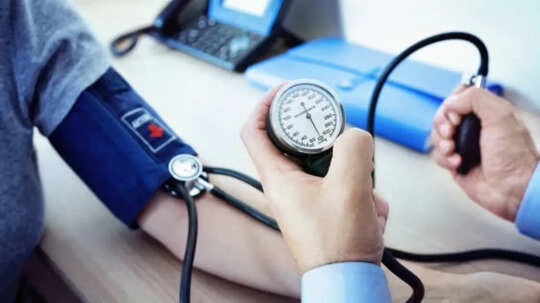If you have high blood pressure levels, you must take early treatment, which includes lifestyle changes and medications, according to a new set of guidelines issued by America’s top heart health groups.
The guidelines – issued jointly by the American Heart Association and American College of Cardiology – call for early and more individualised treatment for those who have an average blood pressure of 130/80 mm/Hg or higher.
“High blood pressure is the most common and most modifiable risk factor for heart disease,” said Dr Daniel Jones, who chaired the committee that wrote the guidelines.
Globally, high blood pressure – also known as hypertension – affects an estimated 1.28 billion adults aged 30-79 years. A significant majority – around two-thirds of these individuals – live in low- and middle-income countries. Doctors say hypertension is a major risk factor for cardiovascular diseases and premature death worldwide. Many people with high blood pressure are also unaware of their condition, and even among those diagnosed, many are not effectively treated or have their blood pressure under control.
Unhealthy lifestyles need to change
The new guidelines call for making strong changes in your lifestyle, science, and real-world tools. An update from the last set issued in 2017 by the AHA, which lowered the threshold for high blood pressure from 140/90 to 130/80, the new set drills down on managing blood pressure among those with unhealthy lifestyles. Important changes include:
- Limit sodium intake to less than 2,300 mg per day, with an ideal limit of 1,500 mg per day.
- Always review nutrition labels of packaged foods and restaurant meals
- Stop drinking alcohol completely
- Manage stress through exercise, meditation , or yoga
- Maintain a healthy weight, which includes a goal of at least 5 per cent weight loss for those who are obese or overweight
- Follow a heart-healthy diet high in vegetables and fruits, whole grains, legumes, nuts , and seeds
- Increase physical activity to at least 75-150 minutes a week, including both aerobic exercise and strength training.
Home blood pressure monitoring is a must
The new regulations also call for home blood pressure monitoring to help doctors confirm a diagnosis of high blood pressure and track progress once treatment has started. The use of a risk calculator to determine the course of treatment is also promoted.
The AHA has released PREVENTTM – a tool that estimates adults’ 10-year and 30-year risk of heart disease. This risk calculator combines measures of heart, kidney, and metabolic health to calculate a person’s risk of heart attack, stroke, or even heart failure. Along with the tool, the guideline recommends that doctors use additional tests to better gauge high blood pressure risk among people with diabetes, kidney disease, and sleep apnea.
It also helps promote control over high blood pressure during pregnancy and suggests the use of medication to lower extremely high blood pressure or for people with conditions like type 2 diabetes, obesity, or kidney disease.
Emphasis on personalised treatment
For many people with high blood pressure who also have type 3 diabetes, the new guidelines suggest that one pill may not be the right medication.
And so, it has been recommended to go for multiple drug classes like ACE inhibitors, ARBs, calcium-channel blockers, or thiazide diuretics. For those also struggling with obesity, adding newer options like GLP-1 medications is one of the ways to treat and keep hypertension in control.
